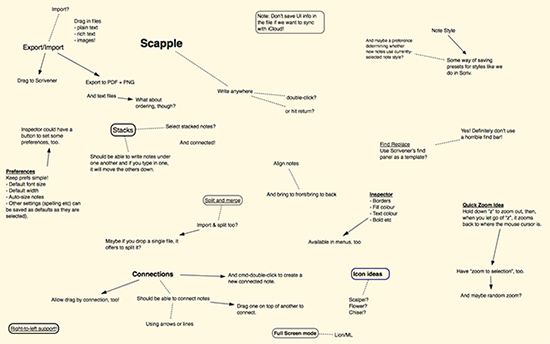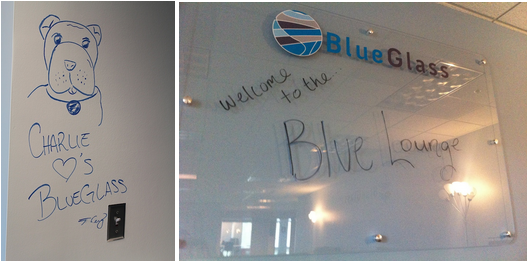How To Brainstorm With Anyone, Anywhere, Anytime
There’s no one-size-fits-all approach to marketing; so, why should brainstorming be any different? An effective content marketing strategy requires creativity. You have to be able to “cut through the clutter” and stand apart from everything else on the Internet demanding attention. Ideas for how to best capture your audience’s attention aren’t always going to come […]
There’s no one-size-fits-all approach to marketing; so, why should brainstorming be any different?
An effective content marketing strategy requires creativity. You have to be able to “cut through the clutter” and stand apart from everything else on the Internet demanding attention. Ideas for how to best capture your audience’s attention aren’t always going to come to you freely — that’s where brainstorming comes in.
Just like a successful content calendar, one of the keys to successful brainstorming is flexibility. Different campaigns are going to call for different solutions. It’s a process of discovery. You have to find out how and where you’re comfortable with “freeform thinking” and create an environment that fosters innovative problem-solving that works within this.
Some of us say that brainstorming “doesn’t work” because we fear criticism and negative feedback from our peers and superiors. Or, we may be afraid of repercussions after offering a counter opinion to our boss. It’s true this can hinder some of the best ideas from being presented. But, even many of those who say traditional “brainstorming” isn’t effective will admit — and research has shown — some of the best ideas come from debates, groupthink, and collaboration.
I’m a big believer in the power of effective brainstorming, and I’d like to walk you through ways to overcome some of the obstacles people face. Try one, try them all. But, keep in mind they all may work for you at different times — remain flexible. You’ll find it’s possible to collaboratively find a solution without hurting anyone’s feelings.
Working With Creative Or ‘Non-Creative’ People
Creativity can stem from something as simple as being open to new ideas. Seeing that creativity come to life is just a matter of bringing those ideas to fruition. Sometimes, this calls for a little bit of help.
Brainstorming is great because it allows even those who do not work in a creative role to let loose and exercise their creative muscles. Including a variety of perspectives in the process is ideal. The person in the “non-creative” role may just offer the perfect (and practical) solution that the creative team would never have thought of working among themselves, and vice versa. And that way, the entire organization can take ownership of the project at hand.
The trick is to encourage all ideas to be brought to the table, no matter how “silly” or “out there” they might seem. Participants are likely to surprise themselves with what they come up with once placed in that “safe” environment, free from judgment. That doesn’t mean there won’t be debate, but oftentimes, friendly debate will result in better ideas and concepts.
Virtual Or In-Person Sessions
Where do you do your best thinking? On your lunch-break walk; morning run; in the shower; in the middle of the night; out with friends; during meditation; sitting at your desk? One of these may be the most common for you, but it’s likely there’s no one place where you generate your best ideas. Keep in mind this is likely true for your entire team.
That’s why remaining flexible will have a huge impact when brainstorming with a group. Luckily, there are a lot of great tools and methods for virtual brainstorming that exist as a solution.
Ever hear of spatial hypertext tools? That’s just a fancy term for tools that help organize ideas generated among groups. Each member of the groupthink brainstorms in isolation, quickly jotting down all ideas that come to mind (try using Scapple for this). All the ideas are brought together, then sorted or clustered into categories based on similarities or correlations. The group then identifies relationships among clusters, combining then prioritizing them.
The fascinating outcome of this process is the ideas that resist clustering are often the most novel and of greatest interest, generating additional ideas among the group. This process establishes collaboration, cohesion, and inclusion among all group members, no matter the hierarchical rank.
However, if you’re in need of a brainstorm, there’s a good chance that you are on a project deadline. My suggestion is to combine the two. Start out with a virtual session so everyone is comfortable developing their ideas in isolation.
After all ideas are collected and sorted, come back together as a group in a physical location (if possible — or a Skype or Google Hangout) and talk it through; encourage discussion around the idea that generated special interest and really stood out. We have an entire whiteboard wall and several glass boards for that purpose throughout our office. We’ve found writing and visualizing ideas on a wall encourages creative thinking.
Another great tool for brainstorming in isolation is WikiBrains. It allows you to see what words and ideas other users associate with a topic, which can lead to the opening of ideas you may never have thought of otherwise.
[youtube]https://www.youtube.com/watch?v=xsDhk4r24u4[/youtube]
Whether virtual or in the office, one of the most valuable pieces of advice I can offer before entering a group brainstorm is to have some sort of goal — know the problem you are trying to solve. This will make coming to a conclusion a much clearer process.
Real Time Vs. “On Your Own” Time
Just as where you do your best thinking can differ, so can the when. Sometimes, ideas may hit you as soon as you’re addressed with a problem. Other times, it takes some thinking. Get your team members involved in the process as soon as possible.
As with the virtual vs. in-office scenarios, one approach is to get everyone in one room sharing all ideas at once. The alternative would be to have everyone involved contribute their ideas privately to one place, then sort through them afterwards. We use Google Docs for this process.
We’ll have several people contributing to and commenting on one document around a particular project for a specified amount of time (usually a day or two) with a hard deadline made known to the team at the beginning of the process.
After that deadline has hit, one person is responsible for compiling all ideas and cleaning the document up. That person then shares the finalized document, and solicits the team for any last thoughts before moving to the next phase of the project, which is usually submitting to the client for approval.
There Is No “Right” Way
No matter what your preferred method for brainstorming is, I suggest keeping an open mind. You don’t know where, when, or from whom your next great idea will come. And once an idea strikes, let it mature. It’s likely that idea still hasn’t reached its full potential. Do some research, share it with your friends and peers, and see where it takes you.
Opinions expressed in this article are those of the guest author and not necessarily MarTech. Staff authors are listed here.
Related stories






